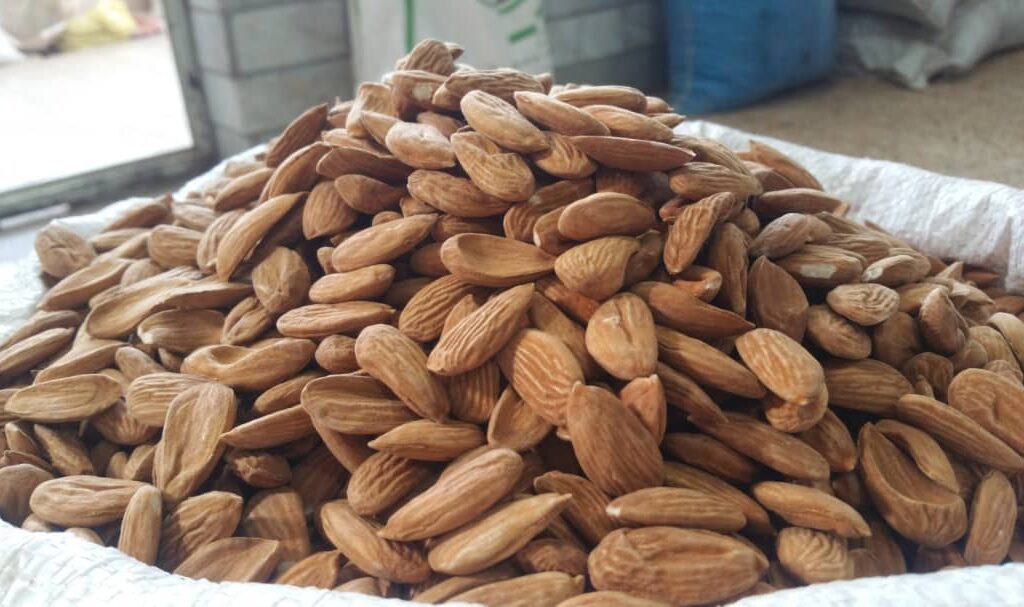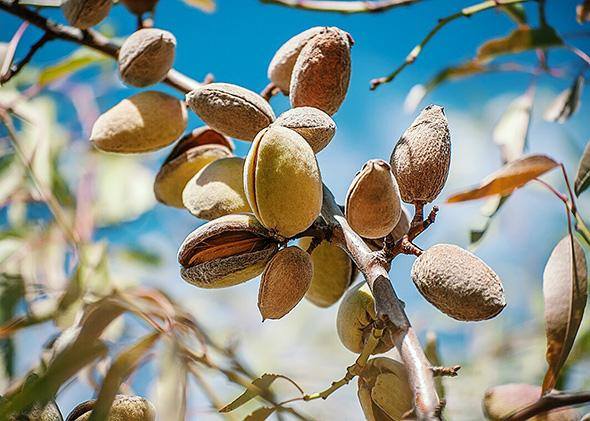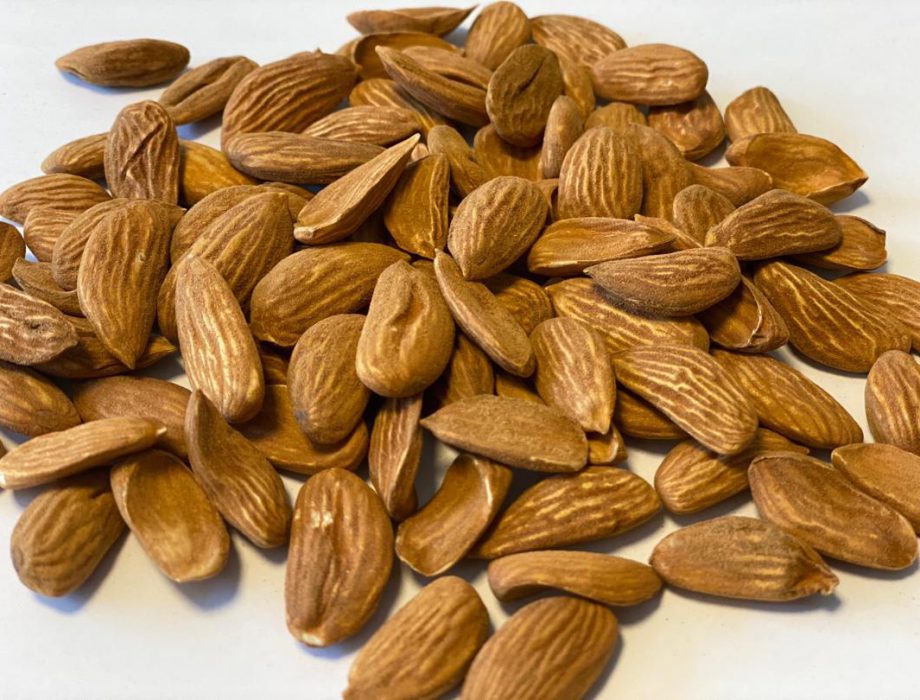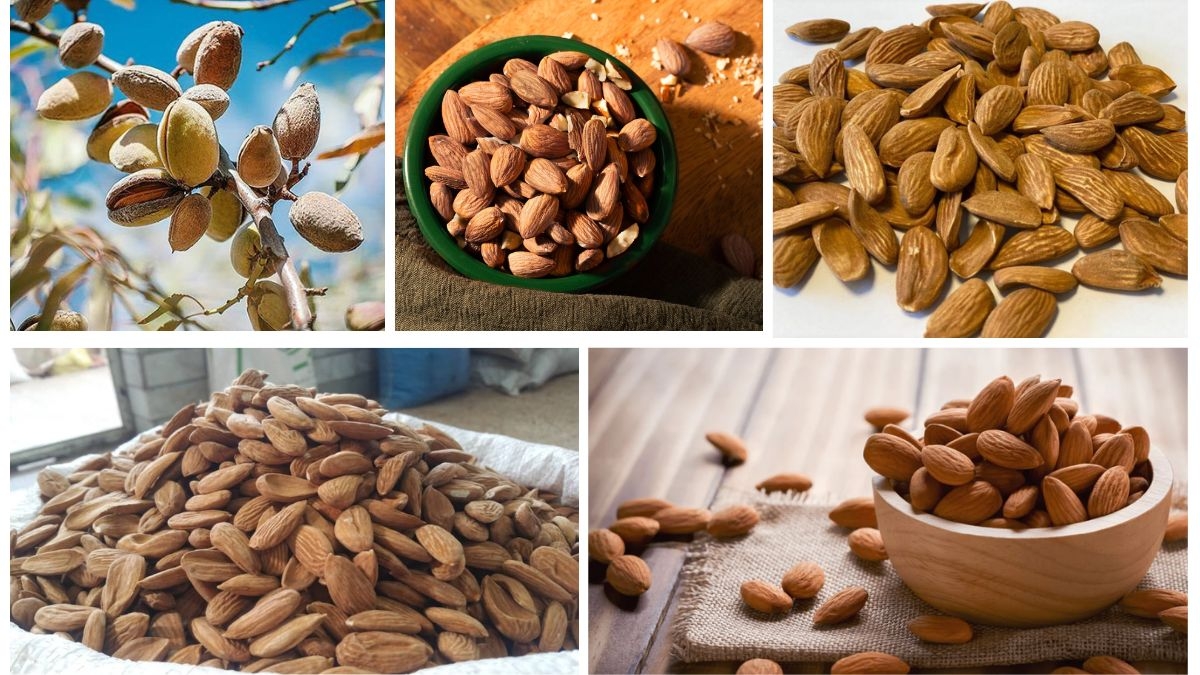Indian almonds, scientifically known as Terminalia catappa, are tropical deciduous trees known not just for their shade and ornamental value, but also for their nutrient-rich seeds—commonly called Indian almonds or tropical almonds. These seeds are distinct from the commercially known “true almonds” (Prunus dulcis), yet they are packed with essential fats, protein, and antioxidants.
Grown in warm, humid climates, Indian almonds thrive along coasts, riverbanks, and tropical lowlands. Over the years, their cultivation has expanded beyond ornamental and ecological uses, especially in regions where local populations value them for both consumption and economic significance.
In this article, we explore which country leads the world in Indian almond production, why it’s the leader, how the market is evolving, and the potential future of this unique crop.
Global Overview of Indian Almond Cultivation

The Indian almond tree is native to South and Southeast Asia, the Pacific Islands, and parts of northern Australia. It is now naturalized across tropical and subtropical regions, including Africa, the Caribbean, and Central and South America.
While not a staple commercial crop like wheat or corn, the Indian almond has carved out a niche market due to its:
- Drought tolerance and low-maintenance requirements
- Soil erosion control abilities along coastlines
- Medicinal and nutritional benefits of its seeds and leaves
- High value in traditional medicine and aquaculture (especially for fish breeders)
However, only a handful of countries produce Indian almonds at a significant commercial scale.
India: The Largest Indian Almond Producer in the World

India proudly holds the title of the largest producer of Indian almonds (Terminalia catappa) in the world.
Why India Leads:
- Ideal Climate
India’s tropical and subtropical zones—particularly in states like Kerala, Tamil Nadu, Andhra Pradesh, West Bengal, and Maharashtra—offer the perfect conditions for Indian almond cultivation. - Traditional Usage
In Ayurveda and other traditional medicine systems, Indian almond leaves and kernels are known for their antibacterial, antioxidant, and liver-protective properties. This long-standing cultural value encourages more local planting and harvesting. - Widespread Availability
Trees grow prolifically along roadsides, public parks, riverbanks, and coastal areas, contributing significantly to the country’s informal but massive production network. - Low-Maintenance Farming
Indian almonds are often planted for ornamental and environmental purposes. Once matured, the trees bear fruit regularly with little human intervention—making it easy for rural populations to collect and sell the seeds seasonally. - Export and Domestic Markets
Although Indian almonds are not exported on a massive scale like cashews or traditional almonds, India still manages to export portions of its yield to Southeast Asia and the Middle East, especially for medicinal or aquaculture-related uses.
Key Producing States in India:
- Kerala – Dense coastal plantations, used in traditional health remedies
- Tamil Nadu – Trees found in agroforestry systems and temple grounds
- Andhra Pradesh – Coastal zones rich in natural Indian almond trees
- West Bengal & Odisha – Along rivers and mangrove zones
- Maharashtra & Gujarat – Scattered growth in dry zones due to drought resistance
Other Notable Producers Around the World

1. Philippines
Known locally as “Talisay”, Indian almonds are common across the archipelago, used both as shade trees and for their medicinal properties. The Philippines is a prominent regional producer but doesn’t surpass India in scale.
2. Indonesia
The warm and humid conditions support widespread natural growth of Indian almond trees. Indonesian coastal regions use these trees extensively for erosion control and local food.
3. Sri Lanka
Although not grown on a large commercial scale, Indian almonds are integrated into Sri Lanka’s tropical agroforestry systems. They contribute to local economies and traditional health practices.
4. Brazil & Caribbean Nations
Indian almond trees are commonly planted along coastal areas for shade and aesthetics. In Brazil and islands like Jamaica and the Dominican Republic, the seeds are sometimes consumed or sold in local markets.
Economic and Nutritional Value

Indian almonds contain:
- Essential fatty acids – Including omega-3 and omega-6
- Antioxidants – Such as flavonoids and polyphenols
- Protein – Making them a nutritious alternative to true almonds
- Medicinal compounds – The leaves and bark have antibacterial, anti-inflammatory, and hepatoprotective benefits
They are used in:
- Traditional medicine (e.g., to treat diarrhea, liver disorders, and skin diseases)
- Natural aquariums (especially in the breeding of betta fish and shrimp)
- Functional foods and herbal supplements
- Organic cosmetics and skincare
India’s abundant production means that many households can access these health benefits affordably.
Environmental Role of Indian Almonds

Indian almonds are not only economically beneficial but also ecologically important:
- Soil Erosion Prevention – The tree’s deep roots help stabilize soil in erosion-prone areas
- Carbon Sequestration – As large canopy trees, they absorb and store carbon
- Habitat Creation – Their widespread leaves and large branches provide shelter for birds and insects
- Pollinator Attraction – The flowers attract bees and butterflies, enhancing biodiversity
India’s investment in reforestation and coastal greening projects often includes planting Terminalia catappa due to its durability and low maintenance needs.
Future Potential of Indian Almond Production
With increasing global demand for plant-based, antioxidant-rich foods, Indian almonds may become a more prominent crop in years to come.
Opportunities:
- Export Potential – As more consumers seek exotic superfoods, Indian almonds could find markets in the West and Middle East
- Processing Industry – Potential to produce almond oil, flour, or herbal extracts
- Eco-Tourism & Agroforestry – Promoting Indian almonds as part of eco-friendly plantation models
- Health and Beauty Sectors – Indian almond leaf extracts can be harnessed in organic skincare and pharmaceutical industries
India’s existing dominance in production places it in a strong position to take advantage of these emerging trends.
Conclusion
India stands as the undisputed leader in Indian almond production, driven by its favorable climate, traditional usage, and vast natural plantations. While other tropical countries like the Philippines, Indonesia, and Brazil cultivate Indian almonds, India’s scale, diversity of use, and integration into daily life give it a significant edge.
As the world leans into nature-based wellness and sustainable farming, the Indian almond may no longer remain just a backyard treasure—but emerge as a powerful superfood and medicinal plant on the global stage.





Leave A Comment